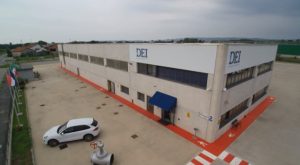Check valve: types and differences things you should know while choosing check valve
Check valve, or one-way valves, are the crucial elements we need when liquid flow control is required.
That is because they only allow flow in a singular direction and they work automatically without human interaction to manually cycle them. They are precious for all kind of industry and even domestic use: for example if we have a sump pump, there is probably a check valve in the discharge line of the pump.
In the oil industry they prevent reverse flow through the pipes. Check valves do work protecting pumps and equipment from backflow damages.
To choose check valves properly to each use we need to know the most common types of check valves and their recommended applications.
But, what exactly function and operations of check valves are? Answering this question will help us choosing the type of valves suitable for each part of a project.

How a check valve works
The main parts which a check valve is made of are: body, seat, disc, and cover. Other elements, often included in a check valve, are spring, ball, stem, and hinge pin. Everything is designed for the automatic work of the valves: they open when the system pressure is regular and close when system pressure decreases, to prevent reverse flow.
The system works because the valves are flow sensitive and monitored according to the flow speed. And they are therefore used also to keep fluids of different pressures separated.
Types of check valve
Due to their principal function of preventing backflow, check valves are widely used for controlling liquid or gas in the oil industry. Let us have look through the main types the market offers.
Swing Check Valves
Swing check valves are probably the most common check valves. They have a quite simple design: a disc attached to a hinge at the top. When the fluid flows through the valve keeps open and when a reverse flow occurs the disc drop down closing the valve.
Stop-Check Valves
These valves are design not only to check, but also to stop a fluid flow mainly when the pressure in the system is too low. That is because the risk is reverse flow to occure. These valves are perfect if we look for elements with a secondary control mechanism. Stop-check valves are interesting because they can also work with an external mechanism or an override control and we can set them indipendently of flow direction.
Ball Check Valves
In the ball check valves, a spherical ball provides flow control inside the valve. The ball freely moves when fluid flows through the system, but moves toward the seat if something unexpected occurs in pressure or flowing. Ball check valves require frequent maintenance, this is probably their only negative point.
Things you should know about check valves
Simple observations and statements will definitely guide us in choosing check valves. Remember that check valves can really solve many inefficiency problems in a piping system.
- They are essential in controlling one-way fluid flow
- They are the only valves that can efficiently operate a fluid pumping system
- Choosing the right size of a check valve is crucial not to cause
- excessive noise, vibration or high loss in pressure – undersized check valves
- early wear of the valves and failure of the essential internal components oversized check valves
- Pay particular attention to properly size check valves designed for low flow applications
- Pipe diameter is the essential feature to consider deciding size of check valves
Keep in touch
Please, feel free to check our distributor page in order to che more details of DEI.
DEI is an official Bonney Forge distributor and we have two social network pages: Facebook Official Fan Page and Linkedin profile too.
